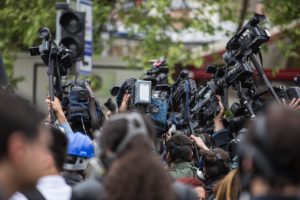Much is to be said about today’s 24 hour news cycle and how it treats truths and facts. And our President has done very little to help the situation, in fact, one could argue he’s taken it to the next level. He’s done this by labeling anything with which he does not agree as fake, or untruthful. The oddest part is how his following “seems” to believe him. How can this be? How can people, believe him?
This got me thinking, what is the relationship between truth and fact? And, is such a relationship even required for the two to exist?
For starters, what is a fact?
A thing that is known or proved to be true
Oxford Dictionary

With that in mind, imagine the following: Out in the desert, in an empty sandy area, there is a bon fire going. The night is cold and the people are wearing jackets to stay warm. There are 10 people all circling the perimeter of the fire. They are chatting, drinking, and generally just having a good time. Those people are sitting about 2 feet from the fire. We’ll call these people, Group A. Another group of people, Group B, are already inside their tents going to sleep. This group is made up of about 50 people and are about 10 feet from the fire. They can hear the chatter from Group A and the crackling of the fire. Finally, there is Group C. These people are anti-social 🙂 so they’ve decided to scatter themselves away from the rest of the groups. They are at least, 200 feet from the bon fire. They cannot hear anyone or feel anything.
Imagine you are a reporter and you ask the following two questions to people in each group; 1) Is there a bon fire? 2) Is the heat from the fire keeping you warm? It would be reasonable to receive these answers from each group:
| 1) Is there a bon fire? | 2) Is the heat keeping you warm? | |
| Group A | Yes | Yes |
| Group B | Yes | No |
| Group C | No | No |
Imagine you had been in Group C, was there a bon fire? We know that in fact, there was a bon fire, but unless you experienced it, how can you really know? As far as you are concerned, there wasn’t one. You were too far away to hear it, smell it, or feel it. You would need to walk the 200 feet to confirm it. At this point, like most of us, you’d take your cue from others.
Now take this thought experiment one step farther and imagine you were the size of an insect and lived inside one of the logs. If this same reporter asked you; 1) Is there a bon fire? 2) Is the world ending? What do you think your imaginary insect-sized-self would say? Yes to both. And yet, Group A would only agree with answer #1. To everyone else, the fire either exists, or not, but the world is certainly not ending.
I appreciate that with all of the information currently available to us, that we look at facts as anchors, and we should. But it’s important to recognize that even facts may seem as otherwise, to others. I am not suggesting that facts are ephemeral, rather that unless you can dedicate time and effort to confirm, they are less factual and more truth. Most of the facts that make up our world have not or cannot be confirmed by us. Is the Earth round? Is gravity real? Is that piece of fruit organic? Unless you have traveled via plane, are a physicist, or a farmer, are you really sure those are true?
As you get closer and closer to the fact, it becomes more true, and vice versa. Moreover, it is possible to get so far into a fact that its original truth can morph into something else completely.



